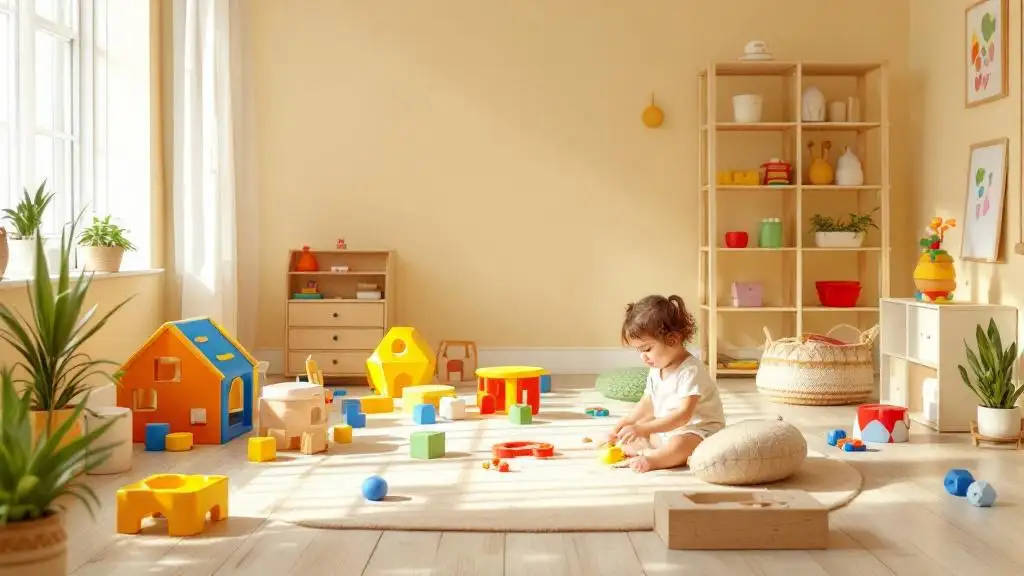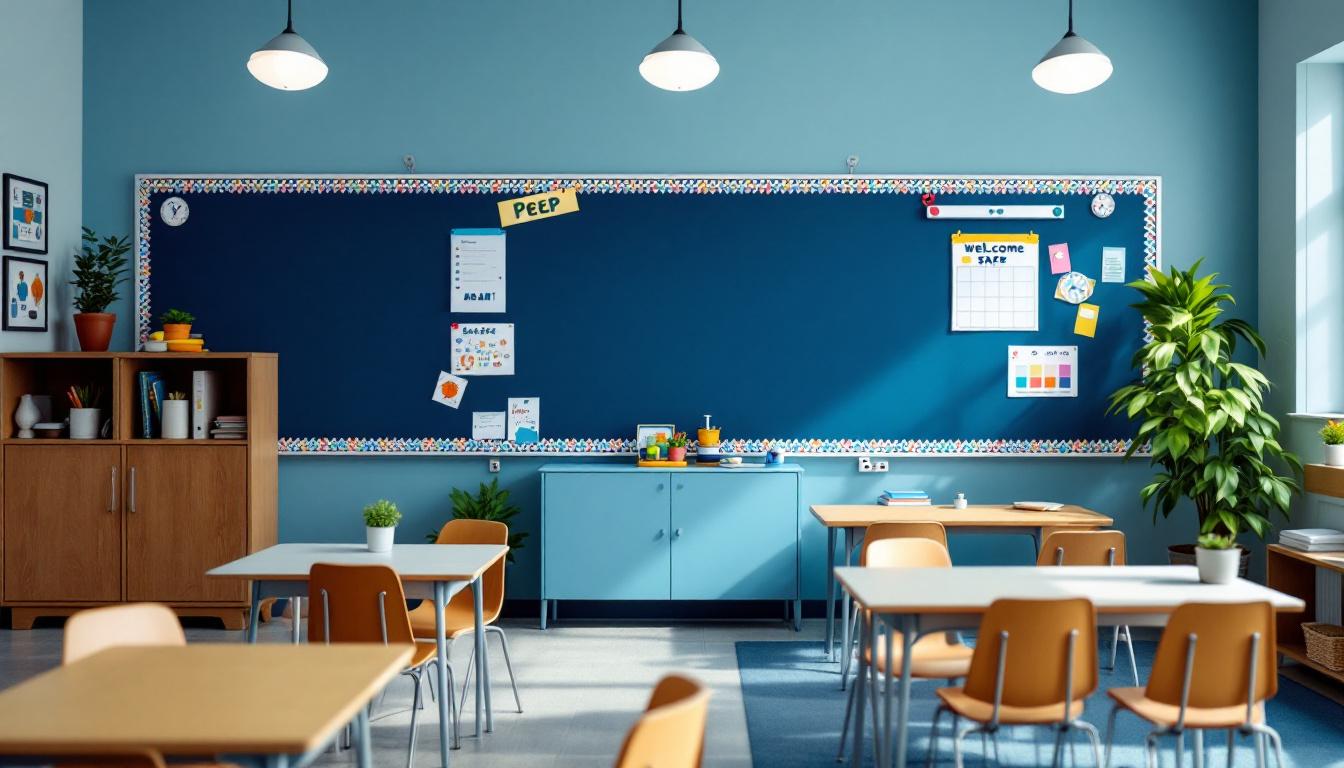Best Practices For Sensory-Friendly Waiting Rooms
Understanding the Importance of Sensory-Friendly Waiting Rooms
Waiting rooms in healthcare and public spaces often pose sensory challenges for individuals with autism, ADHD, and sensory processing disorder. Designing these environments to be sensory-friendly can significantly reduce stress, improve accessibility, and promote inclusivity. By integrating evidence-based practices and empathetic design, providers can create spaces that meet diverse sensory needs while fostering comfort, safety, and calmness for every visitor.
Fundamentals of Sensory-Friendly Design

What are best practices for designing sensory-friendly waiting rooms?
Designing waiting rooms that are sensitive to sensory needs involves creating a calming and approachable environment. Best practices include using subdued lighting with dimmable fixtures to avoid harsh glare and rapid visual changes. Incorporating soundproofing or acoustic panels helps reduce noise levels, which can be overwhelming for some individuals.
Visual clutter should be minimized through organized, neat layouts, and calming color schemes—preferably cool, neutral tones like soft blues and greens—can promote relaxation. Providing adjustable sensory elements such as lamps or visual controls allows visitors to personalize the environment.
Quiet zones or retreat areas equipped with sensory tools like fidget toys, weighted blankets, and noise-canceling headphones give individuals space to self-regulate. Involving individuals with sensory sensitivities in the design process and regularly evaluating the space ensures it remains supportive and effective.
What considerations are important when designing sensory-friendly spaces for children with sensory processing difficulties?
Spaces for children with sensory processing challenges should address all eight senses—sight, sound, smell, taste, touch, vestibular, proprioception, and interoception. Soft, dimmable lighting, and sound-absorbing materials create a non-overstimulating environment.
Eliminating strong fragrances and reducing background noise prevents sensory overload. Including a variety of calming tools, such as textured objects and movement equipment, enables children to self-regulate.
Providing designated quiet zones, flexible seating options, and clutter-free areas supports emotional and sensory regulation. Accessibility and comfort are paramount, making these environments adaptable to individual needs and preferences.
What environmental modifications, such as sound, smell, touch, and visual stimuli, can create a calming sensory environment?
Creating a tranquil space involves sensory modifications tailored to individual preferences. Soft, indirect lighting and inclusion of nature-inspired visuals or calming colors, such as blues and greens, reduce visual overstimulation.
Sound modifications include using soundproofing or noise-absorbing materials to minimize background noise. Offering accessible sensory tools like fidget toys, weighted blankets, and tactile objects supports tactile needs.
Using movement opportunities like gentle rocking or swing seats, along with designated quiet zones, helps in sensory regulation. Incorporating calming scents—like vanilla or lavender—can be helpful, though responses vary. Involving families and professionals in customizing these modifications ensures the environment effectively promotes relaxation.
Are there guidelines for hosting sensory-friendly events and activities in waiting areas?
Yes, hosting sensory-friendly events requires careful planning focused on accessibility. Guidelines emphasize minimizing sensory input—reducing background noise, dimming lights, and avoiding flashing visuals.
Providing sensory tools such as noise-canceling headphones, fidget toys, and designated quiet areas supports participants. Clear signage and visual supports improve wayfinding and understanding.
Event planning should incorporate community feedback, offering diverse sensory activities and regular breaks to prevent overload. Staff training on sensory sensitivities and response strategies is vital to ensure safety and comfort.
Creating a welcoming atmosphere, advertising sensory-friendly times, and involving participants in feedback loops can optimize the experience for individuals with various sensory needs.
How can healthcare and pediatric settings develop trauma-informed and inclusive sensory environments?
Trauma-informed environments in healthcare and pediatric settings prioritize safety, predictability, and emotional comfort. Incorporating natural light, views of greenery, and biophilic designs foster a calming atmosphere.
Using warm colors, minimal clutter, and residential-styled finishes prevents clinical overtones that can cause distress. Providing flexible furniture and adjustable lighting gives individuals a sense of control.
Designating sensory zones, quiet rooms, and therapeutic play areas helps in managing overstimulation. Staff training on trauma awareness, sensory sensitivities, and respectful communication ensures that patients feel understood and safe.
Engaging patients, families, and caregivers in the design process enhances responsiveness to diverse needs. Regular assessments and adaptations promote healing and dignity.
What training or resources are available for caregivers, parents, and staff to support sensory-sensitive environments?
A range of training programs and resources supports the creation and maintenance of sensory-sensitive environments. Organizations such as Rutgers Biomedical and Health Sciences offer courses like Sensory Friendly 101, covering strategies for reducing overload and supporting neurodivergent populations.
Educational resources include online modules, community workshops, and occupational therapy guidance on environmental adaptations, sensory tools, and routine development.
Collaboration among educators, healthcare workers, and families enhances understanding of individual sensory profiles. Practical tools such as visual schedules, social stories, and sensory kits help implement consistent support.
Ongoing professional development ensures staff are updated on best practices, fostering inclusive, responsive environments. These efforts collectively improve experiences for those with sensory processing differences.
Building Equitable and Supportive Waiting Environments
Designing sensory-friendly waiting rooms is an essential step toward inclusive healthcare and public services. By adopting best practices such as calming colors, adjustable lighting, designated quiet zones, and sensory tools, facilities can create environments where individuals with sensory sensitivities feel safe and supported. Training staff in sensory awareness and trauma-informed care further enhances the quality of experience, promoting dignity and comfort. Involving individuals with sensory processing difficulties and their families in the design process ensures that spaces are truly responsive to diverse needs. Ultimately, developing trauma-informed, accessible, and inclusive waiting rooms not only benefits neurodiverse populations but also fosters a more compassionate society that values and respects sensory differences.
References
- Guide to Creating the Perfect Multisensory Waiting Room
- Creating Sensory-Friendly Health Care Environments for Autistic ...
- Creating Trauma-Informed Waiting Areas - Soft Play
- Therapy rooms and waiting rooms: designing for sensory needs
- How to make the waiting room a good place for children with ADHD ...
- Creating Autism Friendly Spaces - WPS
- Sensory-Friendly Healthcare for Neurodivergent patients
- Creating Sensory Friendly Environments - Alta Pediatrics
- Sensory-Friendly Pediatric Clinics: Tips from Dr. Eberhardt De Master
- Sensory Room Helps Children Cope with Difficult Environments
Other articles
Recent articles

How To Teach Decision-Making Skills To Autistic Young Adults

The Connection Between Autism And Epilepsy

Best Practices For Transitioning Autistic Children Into New Schools

Autism And Time Management Challenges In Adulthood

The Role Of Visual Arts In Autism Communication Development

How To Address Tactile Defensiveness In Autism

Best Practices For Telehealth Autism Therapy

How To Help Autistic Children Develop Friendship Skills

How Schools Can Support Autistic Students In Career Prep

Best Strategies For Autism-Friendly Event Planning

Understanding Noncontingent Reinforcement In Autism Behavior Plans

How Drama Therapy Benefits Autistic Individuals

Best Practices For Autism-Friendly Fitness And Recreation Centers

Best Ways To Promote Healthy Social Media Use For Autistic Teens

How To Help Autistic Children Cope With Public Speaking

Autism And Strategies For Managing Unexpected Changes

Best Podcasts About Autism For Parents And Educators

Autism And The Impact Of Seasonal Changes On Behavior

The Role Of Diet In Managing Co-Occurring Conditions With Autism

Sleep Challenges In Autism And Practical Solutions

Best Ways To Build Daily Routines For Autistic Children

Best Practices For Supporting Autistic Entrepreneurs

Autism And Strategies For Navigating Large Social Gatherings

Adaptive Sports And Recreational Activities For People With Autism

Autism And The Benefits Of Story-Based Learning Activities

Understanding The Role Of Play In Autism Development

Autism And The Impact Of Environmental Noise On Learning

How To Create Autism-Friendly Community Spaces

Autism And Chronic Health Conditions: What To Know

The Role Of Care Managers In Autism Life Planning

How To Teach Social Boundaries To Autistic Children

How Autistic Individuals Experience Empathy Differently

How To Support Autistic Employees In Remote Work Settings

Autism And The Relationship Between Motor Skills And Learning

How To Create Community Resource Guides For Autism Families

How To Teach Daily Living Skills To Autistic Teens

Autism And The Impact Of Mind-Body Practices On Stress Reduction

Autism And The Benefits Of Outdoor Group Activities

How To Create Autism-Friendly Sensory Paths In Schools

Best Practices For Autism-Friendly Park And Recreation Areas

Autism And Strategies For Reducing School Refusal

Supporting Autistic Individuals In Public Speaking

The Role Of Diet In Managing Autism Symptoms

The Benefits Of Gardening Clubs For Autism Social Development

How To Prepare Autistic Children For Dental Visits

Autism And Employment: Career Paths That Work

Best Practices For Autism-Friendly Hotels And Lodging

The Impact Of Screen Time On Autism Development

Autism Screening Tools For Early Childhood

The Role Of Physical Exercise In Autism Therapy

Best Strategies For Supporting Autistic College Students

The Role Of Technology In Autism Early Detection

Sensory-Friendly Classroom Design Ideas For Autistic Students

The Role Of Speech Therapy In Building Social Communication Skills

Best Strategies For Handling Autistic Burnout In Adults

Autism And The Importance Of Predictability In Routine

Autism And Peer Education: Teaching Acceptance In Schools

Best Practices For Sensory-Friendly Libraries And Reading Rooms

Self-Advocacy Skills For Autistic Adults

The Role Of Technology In Autism Peer Communication

Promoting Physical Activity In Children With Autism

How To Prepare Autistic Children For Medical Procedures

The Role Of Social Media In Autism Advocacy And Awareness

The Impact Of Sensory Rooms In Public Facilities For Autism

How To Create An Autism-Friendly Holiday Celebration

Best Practices For Inclusive Education For Autistic Students

Autism And Mental Health: Recognizing Signs Of Distress

Best Practices For Sensory-Friendly Waiting Rooms

The Role Of Teachers In Early Autism Red Flag Identification

Autism-Friendly Housing Design Features

Autism-Friendly Housing Design Features

How Environmental Modifications Improve Autism Outcomes

Autism And Technology-Based Learning Tools

Supporting Autistic Children Through Changes In Routine

The Link Between Autism And Working Memory Challenges

Best Practices For Autism-Friendly Cooking Classes

Autism And The Benefits Of Structured Music Lessons

Best Books To Teach Kids About Autism Acceptance

Sensory Diets And Their Benefits For Autism Management

How To Prepare Autistic Teens For Driver’s Education

How To Teach Autistic Teens About Healthy Relationships

The Role Of Visual Prompts In Building Daily Habits For Autism

Addressing Sleep Regression In Children With Autism

Understanding Social Stories And How They Help Autistic Children

Navigating Insurance Coverage For Autism Therapy Services

How To Prepare Autistic Adults For Independent Travel

Supporting Autistic Individuals In Volunteer Work

How Mindfulness Practices Can Support Autism Well-Being

Understanding Hyperfocus And Special Interests In Autism

Understanding Stimming As A Self-Regulation Tool

Sensory-Based Interventions For Autism At Home

Best Ways To Introduce Self-Advocacy In Autistic Teens

Best Ways To Support Autistic Employees In Customer Service Roles

Best Practices For Autism-Friendly Volunteer Programs

Autism And The Benefits Of Sensory Play For Emotional Growth

Autism And Strategies For Building Peer Relationships

Understanding How Autism Affects Memory Processing

Autism And Strategies For Building Coping Skills In Teens

The Role Of Parent Training In Autism Intervention Programs

Autism-Friendly Workplace Accommodations
We’re All About You, Your Family, and Your Child

